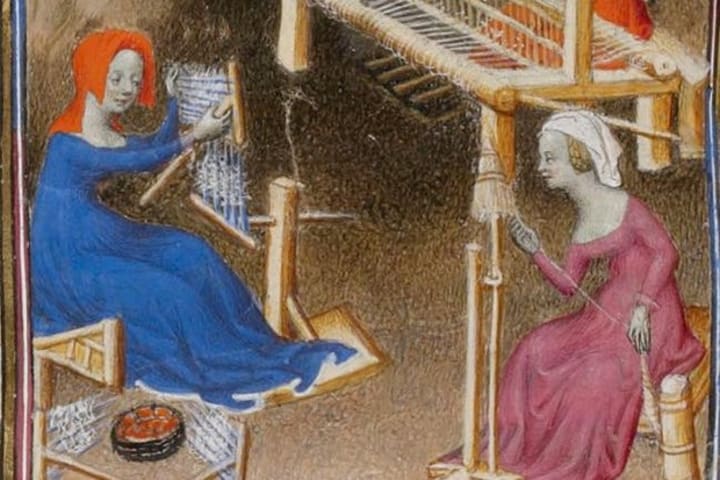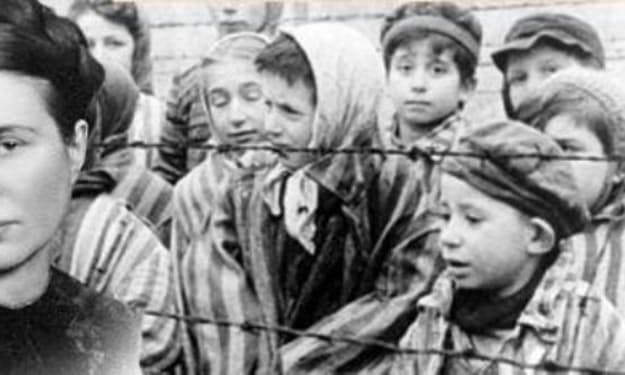
So many of us faintly remember this period of time from our school days. We learnt the names and dates of Kings and Queens for our history exams, and found the ‘info’ comes in handy for the odd pub quiz. For me personally, being so interested and fascinated by history, I couldn’t wait to start this Era --- but where to start? When I got out my history books, this time in history seemed endless --- but I found myself reading for hours --- my husband has never seen me so quiet!
The Medieval Era is dated from the 5th to the late 15th Centuries, beginning with the fall of the Western Roman Empire, moving into the Renaissance and the Age of Discovery. It has been called “The Dark Ages'' because it seemed that it was a time when there were (apparently) no great scientific accomplishments, no great works of art and no great leaders --- although the incredible buildings that we see today, from that Era, are still standing and amazing to look at --- which says something different. Also, the “Black Death”, or bubonic plague, killed 20 million people in Europe between 1347-1350. Back then, it was impossible to prevent the transmission of this disease from one person to another. It was during this time that the Church, specifically the Catholic Church, took hold and it became one of the most powerful institutions of the Era, with even Kings and Queen ‘deriving’ much of their power from alliances with the Church. It was also the time when Islam started to reach many countries: “the Medieval Islamic world was more than three times bigger than all of Christendom,” and this is what “The Crusades” was all about, which started in 1095 and ‘finished’ in the 15th Century --- it was really a war between Christianity and Islam --- but no one won, with thousands killed on both sides.

Life for women in the Medieval Era was very different to our lives today. It seems that whether you were rich or poor, you learnt a skill of some kind. Bear in mind that this was a time when there were no hoovers, washing machines, microwaves, electricity, gas or even the cookers we know today --- the very things that make life easier for us. The ladies of the Castles managed to obtain pleasure out of life but, as young maidens, they still had to learn how to manage a household, which included the family and a whole ‘village’ (as it were) of servants. These young maidens learnt to use the spinning-wheel, card wool, they heckled flax and embroidered beautifully --- as many of the ancient tapestries we can still see today testify. Their entertainment was singing and dancing, as well as playing games, and they listened to music and were able to play, at least, one musical instrument. These wealthy women went hunting and hawking, and they also had pets (including squirrels!), and a bevy of maids who sat at the spinning-wheel too, who also embroidered, “who made all kinds of fine things” --- there were no ‘clothes shops’ like we have today. The merchant's wife had servants to help her in everyday work. These women were skilled in the ‘properties’ of herbs and understood midwifery. After morning mass, they would ‘chat’ with each other (maybe gossip is another word to use) and they held banquets, with dancers and mummers as their entertainment, and these would bring up their children and “paid great attention to their dress.”
Taking a step down in the social classes, we find the ale wives, who made and brewed their own ale. We find the fish-wives, the embroiderers, dressmakers, weaverwomen, baksters (women who baked), the spinsters who spun and the domestic servants. Then there were those matrons who stayed at home, took care of the house, her children and who made and mended clothes. It is interesting to note that a woman could rent a house or have her own business, even if she was married. It was the ideal that every young woman learnt from her mother and became a good wife. Her conduct needed to be beyond reproach.
“The good wife taught hir daughter, Ful manaye a time and ofte, A ful good woman to be: And saide ‘Daughter to me dere, Sum good thou must lere (learn), If were thou wolt thee (thine).” --- This is from “How the Good Wyf taught his Daughter” --- a piece of literature from the Medieval Era.
So to be a woman and wife in this Century, you had to be good at sewing clothes, embroidering, brewing, cooking, as well as all kinds of house-work --- note, this was all done by hand! She was obedient to the Church and her husband, a good mother (if she lived through childbirth) and a good ‘manager.’ Nothing of the time mentions women learning to read or write or being ‘schooled’ in any way.
Those women who stepped out of line, the ‘disorderly’ women, were punished in a cruel way --- their nose was slit or their lips were cut off, or they were carried through the City on a cart, placed in the stocks and had her hair cut off --- depending on her crime. I’m glad I live in this Century!

It is quite possible that our distant cousins were ‘healthier’ than us today. In the Castles, most food was available --- fruit, vegetables, bread, meat, fish,oats, herbs and spices, honey --- but who ate what depended on which “social class” you were in. Bread was a staple food for everyone, rich and poor alike, although only the rich could afford the ‘better’ or ‘white’ bread. ‘Pottage’ was another staple food. It was a thick soup of meat, vegetables or bran. The rich ate “Mortrew” which was more luxurious, the poor ate “Frumenty” which contained cereal. If you lived in London, you ate 11am and 5pm, the merchants had dinner at 12pm and supper at 6pm. The King or great Lord had, of course, a ‘taster’ because of the fear of poisoning. The richer the person, the richer the meal, as they could afford the herbs and spices and ‘chefs’, who could cook these most amazing dishes. A great banquet would have 2 menus and could last for 3 days! The menus included: pig roasted, veal roasted, capon roasted with syrup, small birds with almond milk served together, roasted rabbit, “urchynnes'' or hedgehogs, peacock endored and roasted and served with the skin, pears in syrup, fritters, (etc, etc, etc). Vegetables were always cooked but rare. “At every course of a great banquet the cook sent up a “Subtlety” which was a pastry in the shape of the Castle, which used to occupy the middle of the table. These “Subtleties” were sometimes elaborate and artistic groups,with figures of animals (boar, hart and sheep).” Even the Virgin Mary was made into a “Subtlety!” They also ate tartes and pies.
What a contrast for the poor. They ate cabbage, beans, eggs, oats and brown bread. Cheese, bacon and poultry was a treat. The pottage consisted of peas, beans and onions that were grown in the garden. The ‘dessert’ was berries, nuts and honey (which they collected from the woods). Meat of any kind was a rare treat. Rich and poor alike drank ale, milk being mainly for the young and wine only for the very rich.
An interesting fact is that forks were not used in the Medieval Era at the dinner table, it seems that only knives were --- and you usually had to bring your own one along to a banquet! It was a sharp knife which would ‘spear’ the food rather than cut it, and people would eat directly off the knife. Spoons were ‘supplied’ by the host for the soup course and were used to eat the chunky bits, otherwise you would put the bowl to your mouth and drink it. These spoons were usually made of wood, unless you were rich and had silver spoons, or a King and had gold spoons. Most bowls and plates were made of wood, as it was abundant and inexpensive.
Changing the subject slightly, English was the main language spoken back then (even as it is now). The rich at least understood French, even if they could not speak it, with Royalty speaking it fluently. The nunnery of St.Leonard, Bow, was an ancient Benedictine Foundation, where Anglo-French was taught by the nuns.At Oxford, the students translated into French and English alternately. In the year 1362, Parliament was opened by a speech in English and, around the same year, the Courts of Law were ordered to be held in English. Queen Philippa wrote business letters in French with ‘great propriety.’ Of course, Latin was spoken within the Church. It seems that most people spoke more than one language. A peasant who lived in an isolated village would have spoken ‘Middle English’, so that they could understand another person from another part of England, and just enough Latin to say the correct response during Mass or Confession. A trader from London would also need to know French and have a better understanding of Latin, to be able to trade with others from far-flung areas. The boys who went to ‘school’ were also taught Latin and Hebrew. “The language of beautiful literature was Old French.” It seems that English didn’t bloom until the 14th Century. It's to be remembered that most people (especially the poor) could not read or write, so language was ‘taught’ orally through the generations. They had probably never heard of a noun, a verb or grammar. Still, they were able to communicate fairly well in everyday life.
So, who were the Kings and Queens of the Medieval Era? Where do we start? Let’s start with the date that everybody knows. William I ‘came’ to the English throne in 1066 after the Battle of Hastings, when he defeated Harold II. It was William I who ordered the first census of English properties, known as the “Domesday Book.” Then came William II who reigned from 1087 to 1100 and also had power over Scotland, Wales and Normandy. This King never got married or had any children, so the throne passed to Henry I. Henry I reigned from 1100 to 1135 and was a ‘skillful politician.’ Then there was Stephen, who was the nephew of William I, and reigned from 1135 to 1154. This King was a mild and generous man and, apparently, the collection of taxes was frequently ignored.
The next English monarch was the Empress Matilda, who was born 1102 and died 1167. She was the Empress of the Holy Roman Empire, Countess of Anjou and Duchess of Normandy. When her father, Henry I, died her cousin, Stephen of Blois, usurped the throne and this gave rise to a civil war known as the “Anarchy.” Henry II Plantagenet reigned next, from 1154 to 1189, and this is a name we know from our school days. Henry II was the first King of the Plantagenet dynasty. Richard I, “Richard The Lionheart”, reigned England from 1189 to 1199. His reign only lasted 10 years, and all this time, Richard ‘stayed’ in England for only a few months and never learnt the English language. However, this King was considered a hero and was a famous poet and writer.
John Lackland came next. He was the 5th son of Henry II and became King in 1199. It was during this reign that the “Magna Carta” came into existence in 1215. Henry III became the next King in 1216, the eldest son of King John Lackland. Henry III’s son reigned next, Edward I Plantagenet from 1272 to 1307. Then came Edward II and Edward III. Edward III reigned for 50 years and it would be another 400 years before another monarch reigned for such a length of time.
King Richard II came next and he was loved by the English people (1367-1399). “Never was there a more gallant prince to look upon.” Richard was only 11 years of age when he became King! Henry IV was next (1367-1413), then Henry V (1387-1422). This King was always open to the influences of religion, being crowned on 9th April, which was Passion Sunday. Henry VI (1421-1461) came to the throne at 9 months of age when his father, Henry V, died. Having inherited the “Hundred Years’ War”, Henry had a number of mental breakdowns and was imprisoned in the Tower, where he died on 21st May, possibly on the orders of Edward IV who became the next King. Edward IV became King in 1461 and ruled until 1483. Now came the “Wars of the Roses” which we all remember from school. When he died, the Duke of Gloucester seized the throne and became Richard III, who (it is generally believed) had his 2 young nephews killed in the Tower of London. Richard III was killed in battle at the Battle of Bosworth and thus started “The House of Tudor.”

All of these Kings and Queens made up “The House of Plantagenet.” It was during this time that the Magna Carta came into being and a distinct national identity was shaped by conflict with the French, Scots, Welsh and Irish. English became the primary language in England.
As a conclusion, here are some of the things that happened during the Medieval Era:
1066 --- the Battle of Hastings
1085 --- the Domesday Book is completed
1095 --- The First Crusade is decreed
1170 --- Thomas Becket is murdered
1215 --- Magna Carta was signed
1314 --- the Battle of Bannockburn
1348 --- the Black Death comes to Britain
1381 --- the Peasants’ Revolt
1415 --- Henry V defeated the French at Agincourt
1485 --- Richard III is defeated at the Battle of Bosworth

This time in history is such a large subject that there have been hundreds of books written on the Medieval Era. The Victoria and Albert Museum have literally thousands of artifacts from this period and I have personally found it a fascinating subject to research (and I haven’t even touched on the ‘fashion’ of the day). What always amazes me is that the beautiful buildings of the Medieval Era --- are still standing today!
(My research comes mainly from the book “Medieval London” by Walter Besant)
About the Creator
Ruth Elizabeth Stiff
I love all things Earthy and Self-Help
History is one of my favourite subjects and I love to write short fiction
Research is so interesting for me too






Comments
There are no comments for this story
Be the first to respond and start the conversation.